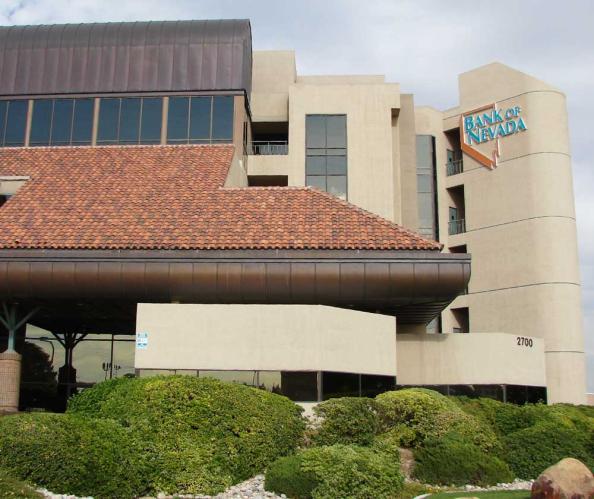Economist Christopher Thornberg, Ph.D. Expects Relatively Quick Economic Recovery for Southern Nevada
Nevada is set to experience a strong recovery due to consumer pent-up demand, generous stimulus efforts, and the vaccine's increasing availability and distribution. The pandemic most impacted tourism, entertainment, convention, and the restaurant industries, meaning Southern Nevada's economy will take longer to return to normal than non-tourism-based economies. Vaccines are crucial to making the public feel comfortable with large public gatherings.
Fortunately, millions of individuals are receiving their COVID vaccine every day around the country. Several sectors of the economy are growing, but the speed at which the recovery continues will be dictated by the pace of the vaccine's rollout, according to economic forecaster Christopher Thornberg, Ph.D., of Beacon Economics, who shared his findings during the Bank of Nevada Virtual Economic Forum on March 10, 2021.
Thornberg has not changed his opinion, first offered in July of 2020 that the economy will experience a "V" recovery. In fact, from a GDP perspective, the recovery is underway. According to Thornberg, recessions are measured from the peak of the last expansion to the trough's bottom. By that measure, Thornberg says the pandemic-related recession was the shortest in U.S. history, beginning in February of 2020 and ending in April of 2020 when GDP hit a low of 16,500. By May of last year and nearly every month after, GDP increased over the prior month. The exception was November and December of 2020 when an uptick in COVID cases stalled business and production. By January of 2021, GDP was again on the rise, reaching 19,000. "We saw an enormous amount of economic activity in the third quarter of last year (2020)," said Christopher Thornberg, Ph.D. founder of Beacon Economics. "Indeed, of the decline that happened during the downturn, we already gained about 70 percent of lost ground."
Southern Nevada Economy
While the pandemic's impact on Southern Nevada's tourism-based economy is significant and temporary job losses widespread, Thornberg sees several positive indicators. In terms of taxable sales, what the public didn't spend on services during the downturn, they spent on goods. Taxable sales were down 12.9 percent in 2020, year over year, much closer to normal than many would have anticipated. Housing numbers have been strong, with home sales up 12.5 percent in January 2021, year over year, which also led to increased residential permits. Home prices rose 14.5 percent during the same time frame. "Housing demand is a fundamental sign that the economy is getting ready for a new era of growth relatively quickly," said Thornberg. "Clark County is having the best new home construction numbers since 2007." Signs of optimism can also be found in the number of Nevada entrepreneurs forming news businesses which are up 22 percent in 2020 over the previous year.
Unemployment
Historically, when unemployment goes up, it can take a long time to come down, as happened during the Great Recession. Thornberg says the downturn created by the pandemic is quite different. While the unemployment rate did spike to about 12 percent in the pandemic's early days, many of those workers were "temporarily" unemployed. Hotel, restaurant, bar, and convention employees still technically had jobs, but their workplace was closed due to the virus. By January 2020, the 12 percent "temporary" unemployment rate decreased to about 2 percent as many of those workers went back to their jobs. The truly unemployed - those without a position to go back to - remains at about 5 percent, a relatively low number. By comparison, the Great Recession's unemployment rate hit 9 percent in 2010, and it took about four years (2014) to lower to 6 percent.
Population Growth
Migration changes in the Western United States will continue to fuel growth in Nevada. In 2020, California had a significant out-migration and lost more residents than any other state, and many of them are coming to Southern Nevada. The cities seeing a year over year population increase include Mesquite, up 5.9 percent; Henderson, up 2.7 percent; North Las Vegas, up 2.4 percent; Las Vegas, up to 1.3 percent; and Boulder City, 0.7 percent.
Thornberg provided his opinions and insight during an online presentation on March 10, 2021, to clients of Bank of Nevada and First Independent Bank, both divisions of Western Alliance Bank, Member FDIC. To access the recording of Dr. Christopher Thornberg's entire video presentation, please click here.
Bank of Nevada
Bank of Nevada, a division of Western Alliance Bank, Member FDIC, delivers relationship banking that puts clients at the center of everything. Founded in 1994, Bank of Nevada offers a full spectrum of tailored commercial banking solutions delivered with outstanding service. With offices in Las Vegas, Henderson, North Las Vegas and Mesquite, Bank of Nevada is part of Western Alliance Bancorporation, which has more than $85 billion in assets. Major accolades include being ranked as a top U.S. bank in 2024 by American Banker and Bank Director. As a regional bank with significant national capabilities, Bank of Nevada delivers the reach, resources and local market expertise that make a difference for customers.
